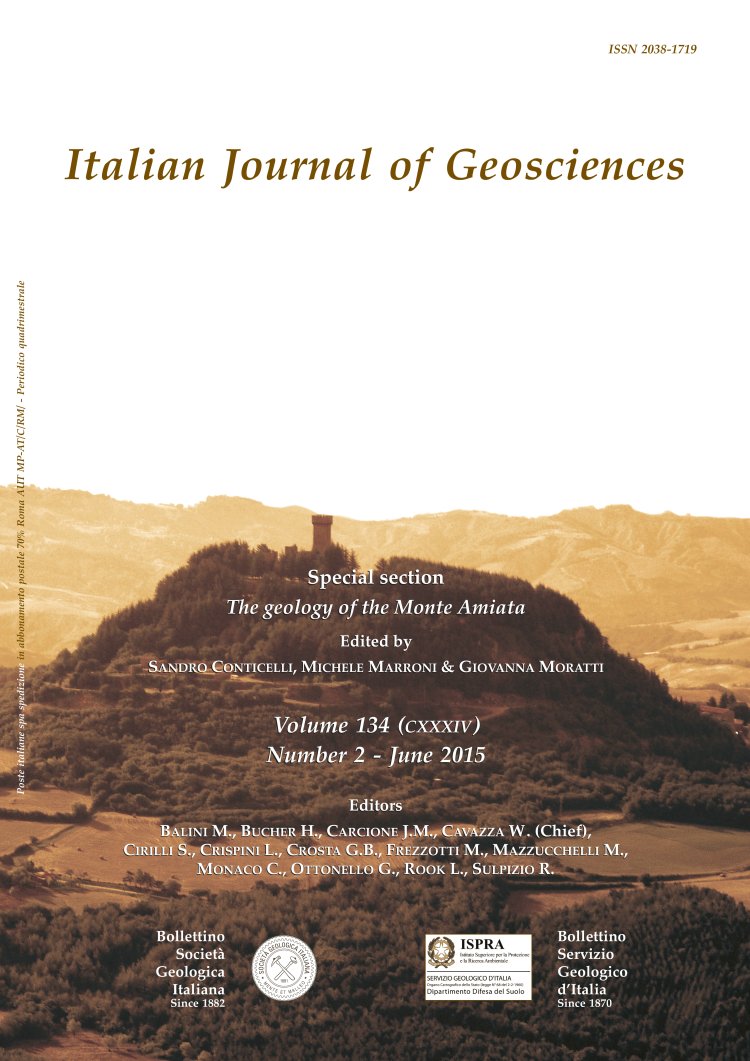
New 40Ar-39Ar dating and revision of the geochronology
of the Monte Amiata Volcano, Central Italy
Marinella Ada Laurenzi (*), Eleonora Braschi (**), Martina Casalini (***), (****), Sandro Conticelli (**) & (****)
(*) Istituto di Geoscienze e Georisorse, Area della Ricerca CNR, Via G. Moruzzi, 1 - 56124 Pisa, Italy. E-mail: m.laurenzi@igg.cnr.it; ph: +39-050-6212272; fax: +39-050-3152360.
(**) Istituto di Geoscienze e Georisorse, CNR, UOS di Firenze, Via G. La Pira, 4 - 50121 Firenze, Italy.
(***) Dipartimento di Scienze della Terra, Università degli Studi di Pisa, Via S. Maria, 53 - 56126 Pisa, Italy.
(****) Dipartimento di Scienze della Terra, Università degli Studi di Firenze, Via Giorgio La Pira, 4 - 50121, Firenze, Italy.
Volume: 134 (2015) f.2
Pages: 255-265
Abstract
The duration of the Mt. Amiata volcanic activity is still a matter of debate, in spite of the presence of several geochronological data in the literature. We performed new 40Ar-39Ar dating on the sanidinegroundmass pairs of the upper stratigraphic units: Dome and massive Lava flows Complex (DLC) and Olivine Latitic final Lavas (OLF). The aim was twofold: to check the reliability of sanidine ages as geochronometer in these products, questioned in the literature, and to better define the chronology of the late activity of this volcano. Ages obtained on coexisting sanidine and groundmass of the Dome and massive Lava flows Complex (DLC) samples overlap within errors, demonstrating that sanidine crystals recorded reliable emplacement ages in these rocks. The Olivine Latite final lavas (OLF) display a different scenario, where the groundmass has an age younger than that of the sanidine, which is xenocrystic and, evidently, retains inherited Ar. Preferred ages for analysed DLC samples are comprised between 301 and 294 ka, an interval of time too short to resolve the ages of the four dome samples taken into account. The Ermeta lava is about 60 ka younger. We propose that the majority of Mt. Amiata volcanic rocks were emplaced in a narrow interval of time, whilst a temporal gap, which needs more detailed constraints, exists with at least one of the Olivine Latite final lavas (OLF).
Keywords
40Ar-39Ar dating, Dome and massive lava flows Complex, Olivine Latite final lavas, Mt. Amiata volcano, Central Italy.
Get Full Text Supplementary Material